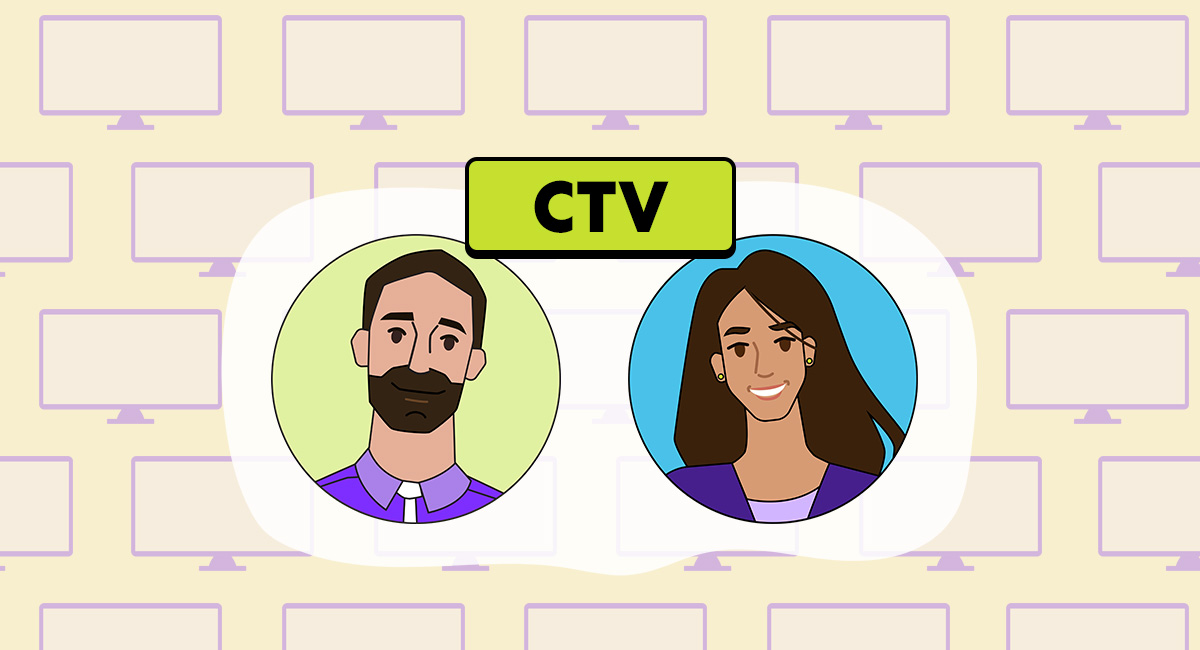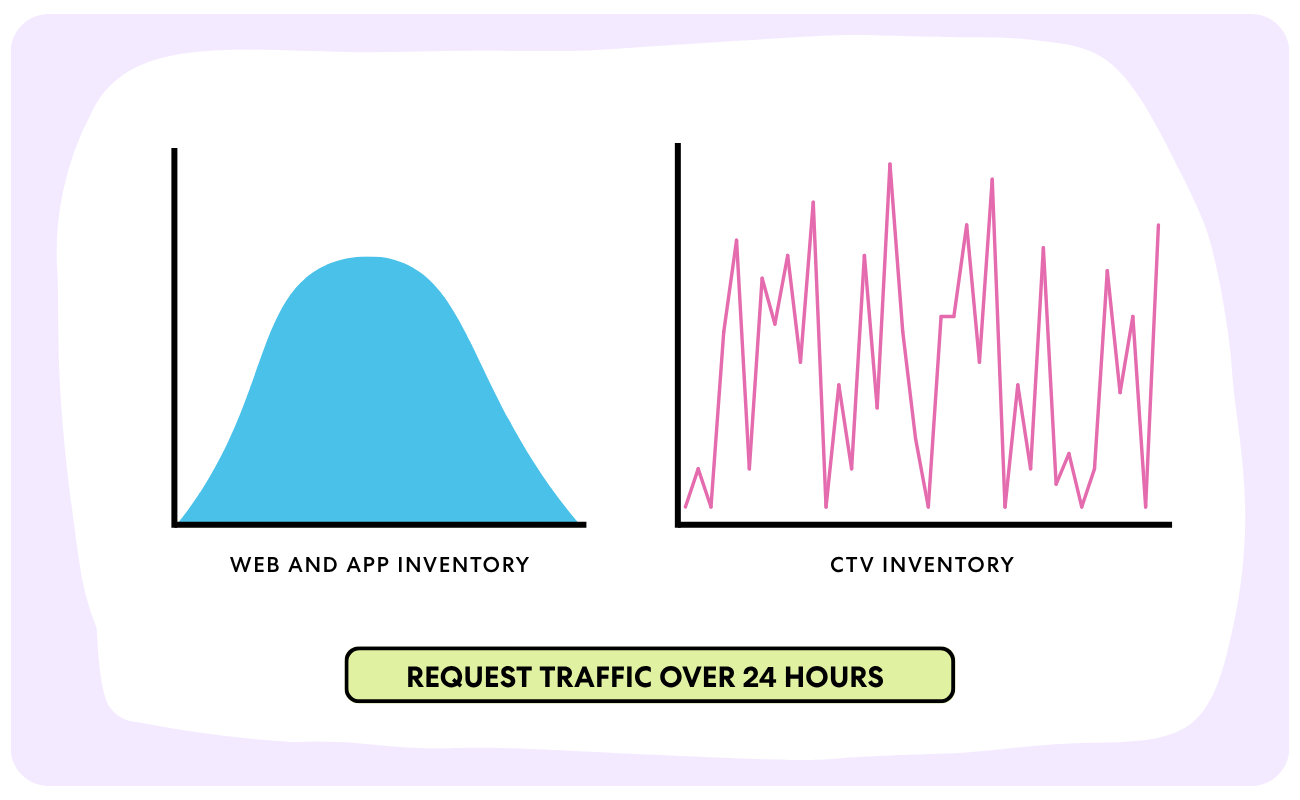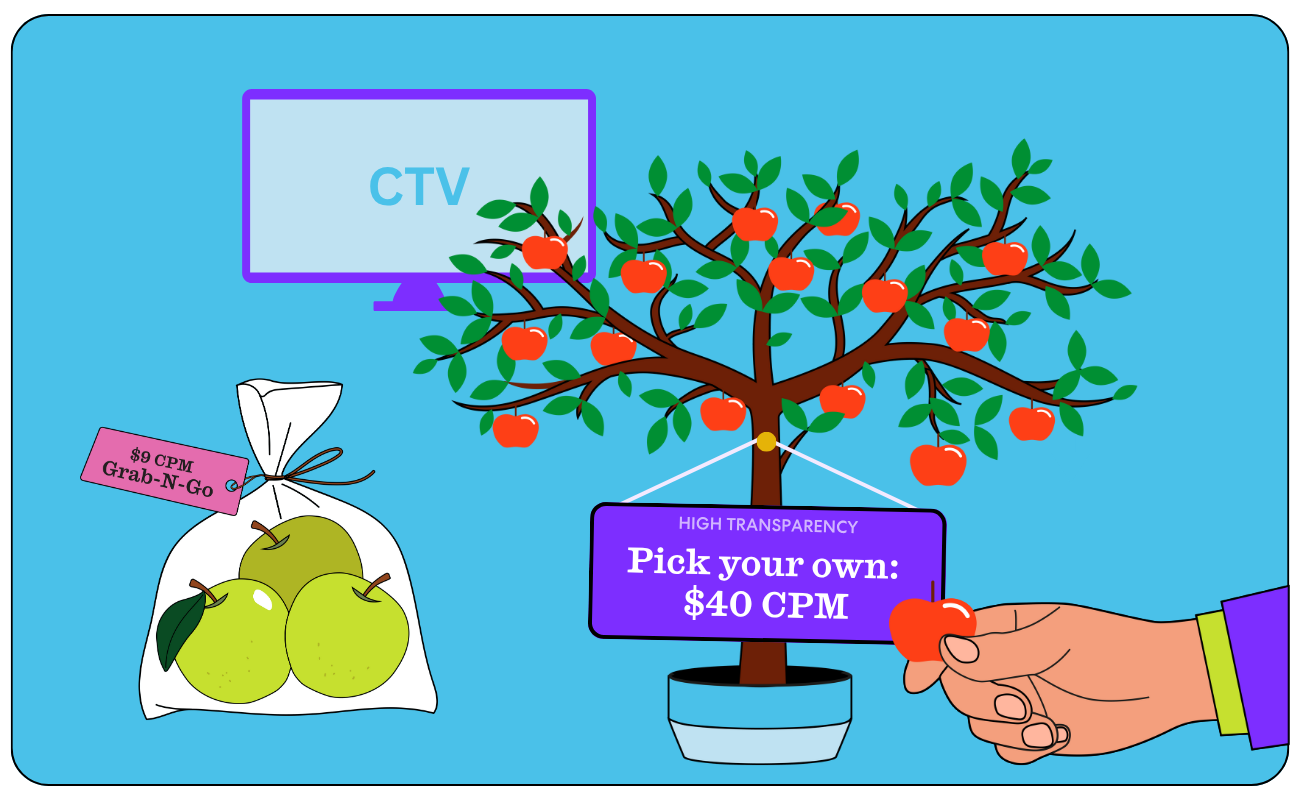
Blog / Insights
In this two-part deep dive, supply chain expert Chris Kane discusses the complexities of bid duplication. In this part, the conversation focuses on the unique problem that CTV presents for the supply chain.

Chris Kane
Founder and President, Jounce Media

Chandra Cirulnick
VP of Supply, Yahoo DSP

Listen in as Chris & Chandra unpack how CTV magnifies bid duplication challenges. From spotlighting the three big culprits to opinions on how Yahoo DSP should tackle these hurdles. We can’t help but wonder, will CTV’s unique pressures finally push the industry to simplify the supply chain?
.png)
Chandra: I’m excited to talk with you again since you're such a respected supply chain expert. We’ve been thinking a lot about bid duplication, and how we should continue to refine our approach. We see CTV as a huge and pressing opportunity for improvement, and you seem aligned based on your July monthly supply path benchmarking report on CTV QPS.
.png)
Chris: Yeah, our basic line of thinking is CTV comes with all the duplication that you get in the web and mobile app categories plus three additional complicating factors.
The first is pod structures. There are proposals for addressing this like pod bidding, but in today's supply chain a single CTV ad pod for let's say 90-seconds gets deconstructed into many what are called singleton requests of fixed length that can fill the pod. And so if you're trying to fill 90 seconds of air time; you might run three auctions for a 30-second creative, plus six auctions for a 15-second creative, and potentially some other things. Now you've taken a single ad opportunity and turned it into lots of requests.
.png)
Additionally for any one of those requests, it's common to send distinct bid requests with different transparency levels. So, if there is an auction for a live sports opportunity, then there might be one request sent with all that information in it with a very high floor price and a different request sent that just says “there's something available”, at a lower floor price. But at a lower price, the publisher is not going to tell you exactly what the ad opportunity is. I just gave two examples, but there might be three or four or six different transparency levels all further multiplying the number of distinct requests that need to be processed by Yahoo DSP.
.png)
And then on top of all of this, if you look at the shape of traffic and ad opportunities on a website over the course of the day, it kind of follows the sun. Do you know what I mean? There's people accessing websites at random times throughout the day, and there are certainly more popular times, but it's a relatively smooth curve of traffic. That's true for mobile games. That is true for video on demand, but that is not true for live and linear CTV. For live and linear CTV, the shape of requests looks like spikes at the moment when everybody is reaching the commercial break. So you put these three CTV specific factors together and we think there are moments in the day , where there might be a billion concurrent requests for connected TV.

And there's no DSP that can handle even 1% of that. So the argument here is we need to fundamentally rethink the supply chain if DSPs are going to buy live connected TV at scale.
.png)
Chandra: Great points Chris. We released a Blueprint Performance feature to handle these spikes better. Our goal is to ensure advertisers can effortlessly optimize delivery in these quick bursts. We’re also actively involved in the IAB initiatives to improve forecasting and delivery for live events. But your point on transparency is interesting. Is there a reason publishers aren’t simply pushing higher-floor inventory with more content transparency and setting a new norm for CTV?
.png)
Chris: They say that it's to prevent cherry picking, but don't think that's true at all. I think they're happy to support cherry picking as long as the price point is sufficiently high. If they're going to give you the opportunity to selectively buy certain impressions, whether it's a live sports event or a premiere of new content, they're willing to do that for the right price. But if you want to buy connected TV at a $15 CPM or a $12 CPM or even a $9 CPM, you're not going to be able to selectively choose just the most premium ad opportunities. You're going to buy essentially a run of the streaming service, which I think is quite reasonable.

To improve the structure of this we need IAB Tech Lab details, which as far as I understand it, currently doesn't make it possible for sellers to send one bid request to Yahoo DSP and feel confident that only certain buyers will have access to certain pieces of information in that request. So now sellers need to send two or three or even 10 requests for all the different combinations of transparency they want to make available for different buyers at different price points.
.png)
Chandra: How do we think we solve this problem as an industry? I don’t think anyone’s truly pro bid duplication. Publishers feel pressured into it, but few are happy with the current state. When we look at CTV, we’re also seeing multiple integration points and sellers through SSPs, along with the publisher’s ad server. So the complexity goes beyond just the number of SSPs; it's also about how many paths each SSP supports.
We've been working with our supply partners to test various methods of deduplication, and early results show that deduplication can happen without negative impact to overall spend with a publisher. Cleaning things up has improved efficiency and in some cases, even driven retention and growth, but we’re not there yet. We’re still refining our approach, and staying aligned through open dialogue with our supply partners.
.png)
Chris: I think we see it the same way. My basic point of view is that DSPs have to establish very fat pipe integrations to every pool of supply. That could be via Yahoo Backstage, it could be through a SSP, or whatever; and then squeeze everything else down to skinny pipes. And Chandra I think you set this up really well. I'd just like to push it slightly further.
I'm optimistic in a weird way, that CTV may turn this into an emergency. An emergency which will require the major DSPs to take pretty aggressive action and say—”we can't listen to all of it and everything will be fine.” In fact, it's going to be better than fine.
And hopefully the emergency that causes DSPs to take this aggressive action then demonstrates that we can do the same thing in the web and mobile app. That might create this precedent that then can extend to the rest of the supply chain. So crossing my fingers for a QPS emergency.
.png)
Chandra: As you laid out earlier, Chris, there are a lot of operational and commercial reasons for bid duplication in CTV that aren’t typically present in other channels. Over time, we’ll find better technical solutions—like podding—but there is still a high volume of unnecessary duplication and reselling. We’re excited that Yahoo DSP advertisers can now use Jounce data directly in our platform to easily identify sellers and supply paths, giving them a clearer route to smarter CTV buys.
--
About Chris Kane
Jounce Media is the industry leader in programmatic supply chain management and is trusted by the world's largest marketers, agencies, media companies, and advertising technology platforms to inform supply path optimization strategies. Chris Kane founded Jounce Media in 2015. Chris was previously Chief of Staff to the CEO and CFO at AOL. Prior to AOL, Chris managed a portfolio of enterprise accounts at Turn, a pioneer in the DSP category. He started his career as a management consultant at Oliver Wyman where he focused on the converging media and technology sectors.
--
About Chandra Cirulnick
As the Vice President of Global Supply Partnerships at Yahoo, Chandra is responsible for forging connections between Yahoo DSP advertisers and programmatic media owners. Her team handles business development and partnership with premium publishers through their preferred exchanges and through Yahoo Backstage, the direct-to-publisher supply path in Yahoo DSP, partnership and integration management with exchanges, supply curation and merchandising, and supply-side distribution of Yahoo Identity Solutions. Chandra has held a number of roles across programmatic supply and demand since joining Yahoo in 2015 (then known as AOL) and previously spent several years in digital advertising sales at Microsoft Advertising.